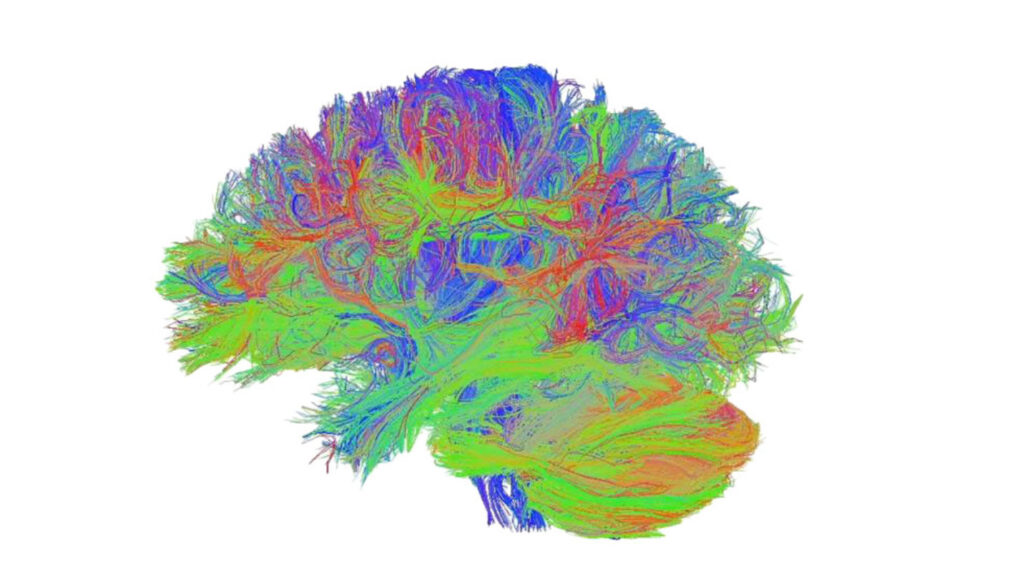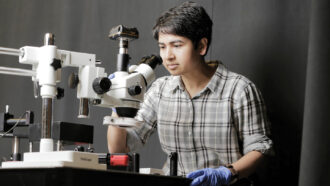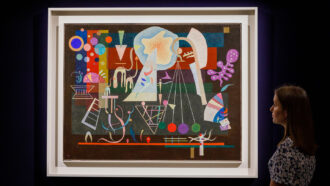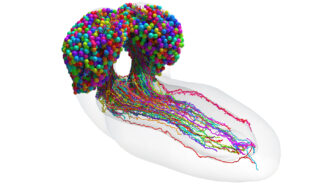axon: The long, tail-like extension of a neuron that conducts electrical signals away from the cell.
cell: (in biology) The smallest structural and functional unit of an organism. Typically too small to see with the unaided eye, it consists of a watery fluid surrounded by a membrane or wall. Depending on their size, animals are made of anywhere from thousands to trillions of cells. Most organisms, such as yeasts, molds, bacteria and some algae, are composed of only one cell.
chemical signal: A message made up of molecules that get sent from one place to another. Bacteria and some animals use these signals to communicate.
compound: (often used as a synonym for chemical) A compound is a substance formed when two or more chemical elements unite (bond) in fixed proportions. For example, water is a compound made of two hydrogen atoms bonded to one oxygen atom. Its chemical symbol is H2O.
dendrites: Hair-like projections from the head (cell body) of a neuron. They sit ready to catch a neurotransmitter, a chemical signal, that has been released by a neighboring neuron.
electricity: A flow of charge, usually from the movement of negatively charged particles, called electrons.
function: The specific role some structure or device plays. (in math) A relationship between two or more variables in which one variable (the dependent one) is exactly determined by the value of the other variables.
hippocampus: (pl. hippocampi) A seahorse-shaped region of the brain. It is thought to be the center of emotion, memory and the involuntary nervous system.
microscope: An instrument used to view objects, like bacteria, or the single cells of plants or animals, that are too small to be visible to the unaided eye.
MRI: Short for magnetic resonance imaging. It’s an imaging technique to visualize soft, internal organs, like the brain, muscles, heart and cancerous tumors. MRI uses strong magnetic fields to record the activity of individual atoms.
nerve: A long, delicate fiber that transmits signals across the body of an animal. An animal’s backbone contains many nerves, some of which control the movement of its legs or fins, and some of which convey sensations such as hot, cold or pain.
neuron: The main cell type of the nervous system — the brain, spinal column and nerves. These specialized cells transmit information by producing, receiving and conducting electrical signals. Neurons also can transmit signals to other cells with chemical messengers.
scanner: A machine that runs some sort of light (which includes anything from X-rays to infrared energy) over a person or object to get a succession of images. When a computer brings these images together, they can provide a motion picture of something or can offer a three-dimensional view through the target. Such systems are often used to see inside the human body or solid objects without breaching their surface.
synapse: The junction between neurons that transmits chemical and electrical signals.









